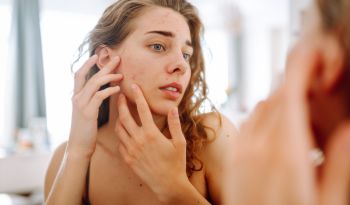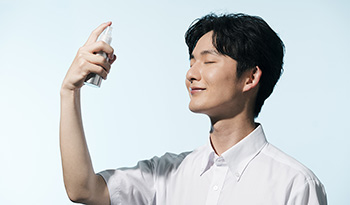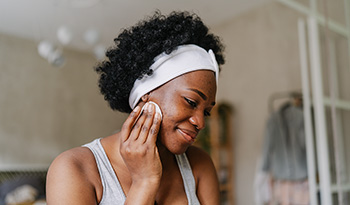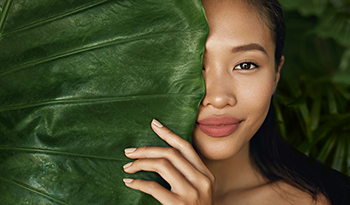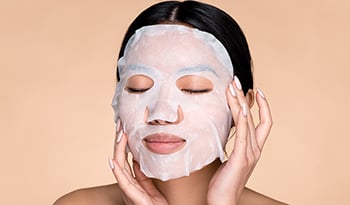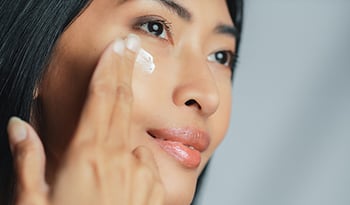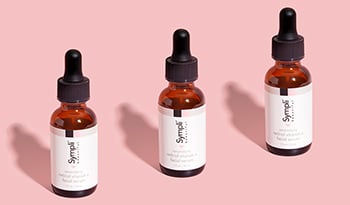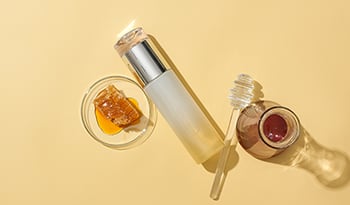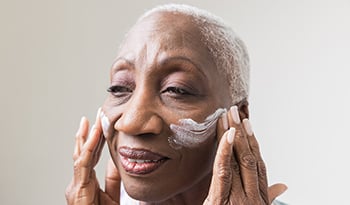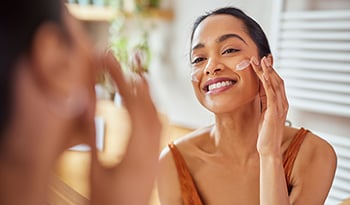Jak přijmout minimalismus ve své rutině péče o pleť
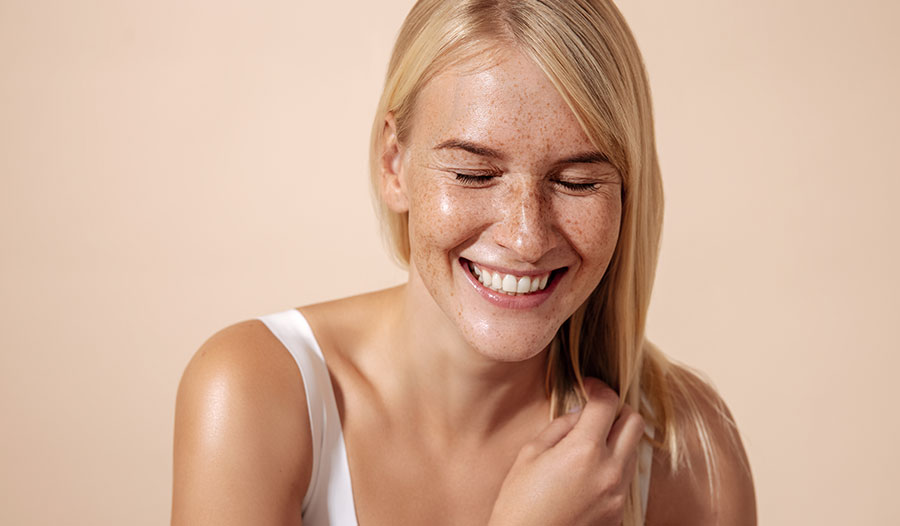
Komunita krásy se v průběhu let posunula a změnila směr. Pokud jste nespali posledních 24 měsíců - což je docela fér, pokud ano, věci byly drsné! Všimli jste si dramatického vzestupu dominance péče o pleť ve světě kosmetiky. Vzestup péče o pleť také ustoupil mnoha populárním a vyvíjejícím se trendům péče o pleť, což nás přivádí k dnešnímu tématu: minimalismus péče o pleť. V tomto příspěvku budeme diskutovat o původu minimalistického trendu péče o pleť a o tom, jak skočit na palubu. Pojďme se do toho pustit.
Co je minimalismus péče o pleť?
Minimalismus péče o pleť je přesně takový, jaký zní — minimální, nenáročná péče o pleť, která stále řeší vaše problémy s péčí o pleť a přináší výsledky. Ale odkud se to vynořilo?
Mnoho milovníků krásy se může ohlédnout zpět a poukázat na rok 2015, kdy se komunita krásy v digitálním prostoru rozjela. Rozšíření krásy na internetu, a konkrétněji dostupnost výukových programů a návodů na YouTube, znamenalo, že spotřebitelé mohli najednou vyzkoušet a experimentovat mnohem pohodlněji s kosmetickými výrobky a trendy doma. Nadšenci krásy začali široce nakupovat produkty doporučené jejich oblíbenými online osobnostmi, a byla vytvořena online komunita vedená vlivnými osobnostmi. Těžké zaměření v této době bylo na líčení, a spousta toho. Beauty YouTubers hrdě vystavovali celé místnosti věnované obrovským kolekcím make-upu, a průměrní spotřebitelé tyto kousky kupovali s nadšením.
Jak to začalo být trendy?
Trend líčení pokračoval několik let, ale na začátku pandemie se péče o pleť zcela jasně posunula do popředí kosmetického prostoru. Masky a práce z domova dávají make-up mnoha lidem na vedlejší kolej. Péče o pokožku je rituál péče o sebe, který můžete dělat ve svém vlastním prostoru, takže není divu, že se stal populárnějším v době, kdy jsme měli jen zůstat doma. Postoj ke konzumerismu v rámci krásy se však také výrazně posunul; existuje mnohem větší povědomí o tom, že je ohleduplnější k životnímu prostředí, a síla mega-influencerů, kteří odrážejí své sbírky a podporují obrovské peněžní nákupy, znatelně poklesla. Spotřebitelé, a konkrétně nakupující péči o pleť, jsou mnohem chytřejší a účelnější při rozhodování o nákupu. Objevili se skinfluencers se zázemím v kosmetické vědě a nabízejí vzdělání o přísadách a formulacích péče o pleť. Vyvrcholení těchto faktorů vedlo k výraznému trendu snižování BS v marketingu péče o pleť, minimalizaci rutin péče o pleť a hledání multifunkčních ingrediencí a produktů. Minimalismus péče o pleť byl pevně zaveden!
Jak snížit rutinu péče o pleť
Abych to objasnil, nezničím dlouhé rutiny péče o pleť. Děláš to! Vícestupňová rutina funguje pro mnoho lidí - včetně mě - a může zacílit na mnoho cílů pokožky a zároveň poskytnout formu relaxace a terapie pro nadšence péče o pleť. Je to zábava zkoušet různé produkty a hrát si s řadou textur a vzorců. Ale přitažlivost k omezení vaší rutiny může být skutečná, také.
Pokud máte citlivou pokožku, může být prospěšné udržovat svou rutinu minimalizovanější a držet se jednoduchých, ale účinných produktů, které znáte a kterým důvěřujete. Zkrácení rutiny může ušetřit čas, je často šetrnější k životnímu prostředí, a co je důležité, šetří peníze. Můžete snížit svou spotřební stopu a držet se spolehlivé a pravděpodobně mnohem lépe zvládnutelné rutiny.
Zkrácení kroků péče o pleť může být složitý proces, pokud jste zvyklí na desetikrokovou rutinu, takže zde je pět klíčových oblastí, které je třeba zahrnout, když hledáte minimálnější řadu produktů péče o pleť.
1. Čištění: Udržování čisté pokožky je základem každé dobré péče o pleť a je to krok, který byste si neměli nechat ujít. Zbavit obličej nečistot, špíny, make-upu a opalovacího krému by mělo být samozřejmostí a je důležité mít pevný čisticí prostředek , který se vám líbí a který je šetrný k pokožce.
2. Hydratace: Hydratace je krok, který osobně změnil mou pokožku, když jsem začal používat hydratační tonery a séra. O důležitosti hydratace pro všechny typy pleti jsem se dozvěděl, když jsem se přestěhoval do Jižní Koreje a začal jsem dodržovat rutiny péče o pleť v korejském stylu. Chcete-li tento krok minimalizovat, často najdete tonerová séra, která kombinují funkce pro zaměření na problémy péče o pleť a hydrataci.
3. Hydratace: Hydratace pokožky je nezbytná pro všechny typy pleti, aby byla zachována přirozená bariéra pokožky, ať už je to lehký gelový zvlhčovač pro mastnou pleť nebo hluboce vyživující krém na bázi oleje pro suchou pokožku. Možná je vaše sérum dostatečně hydratační a nepotřebujete to jako další krok. Používejte to, co je pro vás to pravé, ale ujistěte se, že vaše pokožka dostane vlhkost, kterou potřebuje, aby zůstala zdravá.
4. Ochrana: Opalovací krém je neobchodovatelný pro všechny typy pleti a tóny pleti po celý rok. Opalovací krém nejen zabraňuje známkám předčasného stárnutí - i když je to velká výhoda - drasticky snižuje zdravotní rizika způsobená příliš mnoha nebezpečnými UV paprsky. I když minimalizujeme naši rutinu péče o pleť, neřežte tento krok a pamatujte, že je nejlepší nepoužívat zvlhčovač nebo make-up s opalovacím krémem. Je nepravděpodobné, že by v těchto produktech bylo dostatek SPF, které by přiměřeně chránily vaši pokožku. Držte se samostatného produktu na ochranu před sluncem!
5. Léčba: Pokud se snažíte řešit konkrétní problém - ať už se jedná o velké póry, změnu barvy nebo jemné čáry - budete pravděpodobně muset ve své rutině zachovat léčebný krok nebo složku, abyste to aktivně řešili. Možná najdete sérum , které vám pomůže, které můžete také použít jako hydratační nebo hydratační krok, nebo se možná budete chtít držet samostatného produktu, jako je exfoliant.
Přísady péče o pleť, které dělají všechno
Péče o pleť je samozřejmě špičkovou složkou, pokud jde o stylové stárnutí. Jak stárneme, pokožka prochází různými změnami, včetně vývoje jemných linek a vrásek nebo slunečních skvrn a ztráty záře. Naštěstí máme tipy, triky a produkty, které vám pomohou vylepšit naše rutiny a nadále milovat pokožku, ve které se nacházíte. Používejte správné produkty pro váš typ pleti a pomozte udržovat zdravou a zářivou pleť.
Pokud se rozhodnete snížit svou rutinu, existují ingredience, na které je třeba dávat pozor a které mohou sloužit k léčbě mnoha různých kožních problémů jedním tahem. Toto jsou moje osobní oblíbené hvězdné ingredience, které to všechno dělají!
Hlemýžďový mucin
Starý, ale dobrot, zejména v korejské péči o pleť, má hlemýžďový mucin mnoho výhod. Dva z nejpřínosnějších v mých rozsáhlých zkušenostech s produkty hlemýžďového mucinu byly funkce opravy pokožky při zklidnění citlivosti a zvlhčení. Hlemýžďový mucin pomáhá uklidnit a zároveň podporuje růst nových buněk k opravě. Z tohoto důvodu považuji hlemýžďový mucin za spolehlivou složku, když je moje pokožka citlivá, podrážděná nebo se uvolňuje. Podporováním růstu nových buněk může hlemýžďový mucin také potenciálně zacílit na jemné linie. Hlemýžďový mucin je také zvlhčující, takže můžete vidět, že je to opravdu všestranná možnost pro udržení zdravé a vyvážené pokožky.
Niacinamid
Niacinamid je extrémně běžný v korejské péči o pleť a proto jsem se s ním tak seznámil. Zpočátku jsem se obrátil na produkty nabité niacinamidem převážně jen pro rozjasnění mé pokožky, protože dobře funguje při řešení pigmentace a večerního tónu pleti. Ale rychle jsem se dozvěděl, že je to extrémně všestranná složka a bylo také prokázáno, že zvyšuje hydrataci a zároveň zlepšuje výkon hydratačních produktů, snižuje vzhled pórů, uklidňuje zarudnutí a celkově pomáhá řešit účinky předčasného stárnutí pokožky.
Propolis
Propolis je vynikající volbou pro víceúčelovou složku péče o pleť a je k dispozici v mnoha různých typech produktů. Nejznámější historické použití propolisu je pro hojení ran kvůli jeho antibakteriálním a protizánětlivým vlastnostem. Ti, kteří mají akné a jiné podráždění nebo stavy kůže, mohou z propolisu velmi těžit při hojení a opravě pokožky, stejně jako při zklidnění a snižování zánětu. Mnoho propolisových produktů je také hydratační, což pomáhá řešit několik klíčových oblastí péče o pleť v jednom!
Retinol
Retinol je typ retinoidu, skupiny derivátů vitaminu A, a byl široce oslavován jako faktor, který mění hru v rámci rutiny péče o pleť. Retinoly, dostupné jak v předepsaných, tak v jemnějších OTC produktech, se běžně používají ke snížení jemných linek nebo k léčbě akné, protože složka urychluje buněčný obrat a zvyšuje kolagen. To také rozjasňuje, vyhlazuje texturu, vyrovnává tón pleti a ovládá póry. Je známo, že retinol přináší výsledky, ale měl by být vždy zahájen pomalu, abyste zjistili toleranci vaší pokožky.
Od vícestupňového po multifunkční
Stravování: Minimalizace vaší rutiny péče o pleť může znamenat, že stále získáte všechny výhody své rutiny a zároveň ušetříte čas, peníze a prostor ve vaší koupelně! Produkty lze použít pro více potřeb a hovořili jsme o různých přísadách, které mohou řešit řadu problémů najednou. Delší rutiny jsou příjemné, ale víte, které pro vás fungují, a jste v souladu se svou rutinou? Pokud ne, zkrácení rutiny péče o pleť může zajistit, že si vyberete produkty, o kterých víte, že jsou prospěšné pro vaše potřeby pokožky, a můžete si vytvořit rutinu, která je účinná a snadno udržovatelná. Vyhrajte, vyhrajte!
ZŘEKNUTÍ SE ODPOVĚDNOSTI: Účelem tohoto blogu není poskytovat diagnózu, léčbu nebo lékařskou pomoc. Obsah poskytovaný na tomto blogu slouží pouze pro informační účely. Poraďte se s lékařem nebo jiným zdravotnickým pracovníkem ohledně jakékoli lékařské nebo zdravotní diagnózy nebo možností léčby. Informace na tomto blogu by neměly být považovány za náhradu za radu od zdravotnického pracovníka. Tvrzení týkající se konkrétních produktů v tomto blogu nejsou schválena k diagnostice, léčbě, léčbě nebo prevenci nemocí.
VYLOUČENÍ ODPOVĚDNOSTI: Tento blog není určen ke stanovení diagnózy...














































































 Obsah
Obsah



